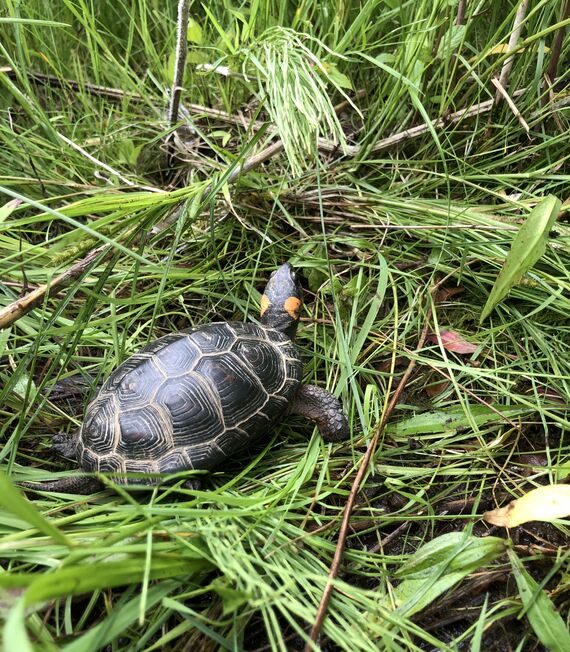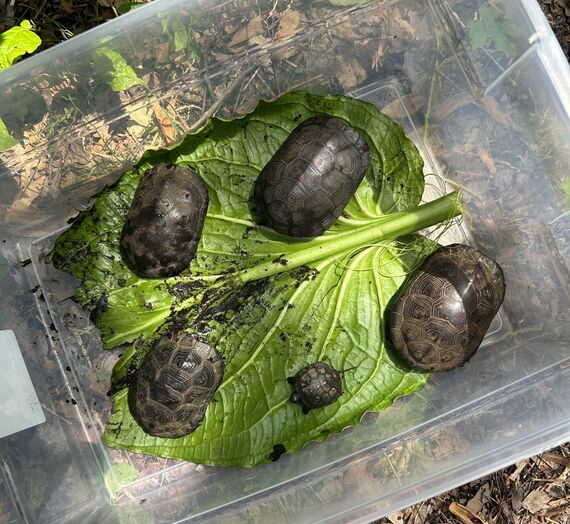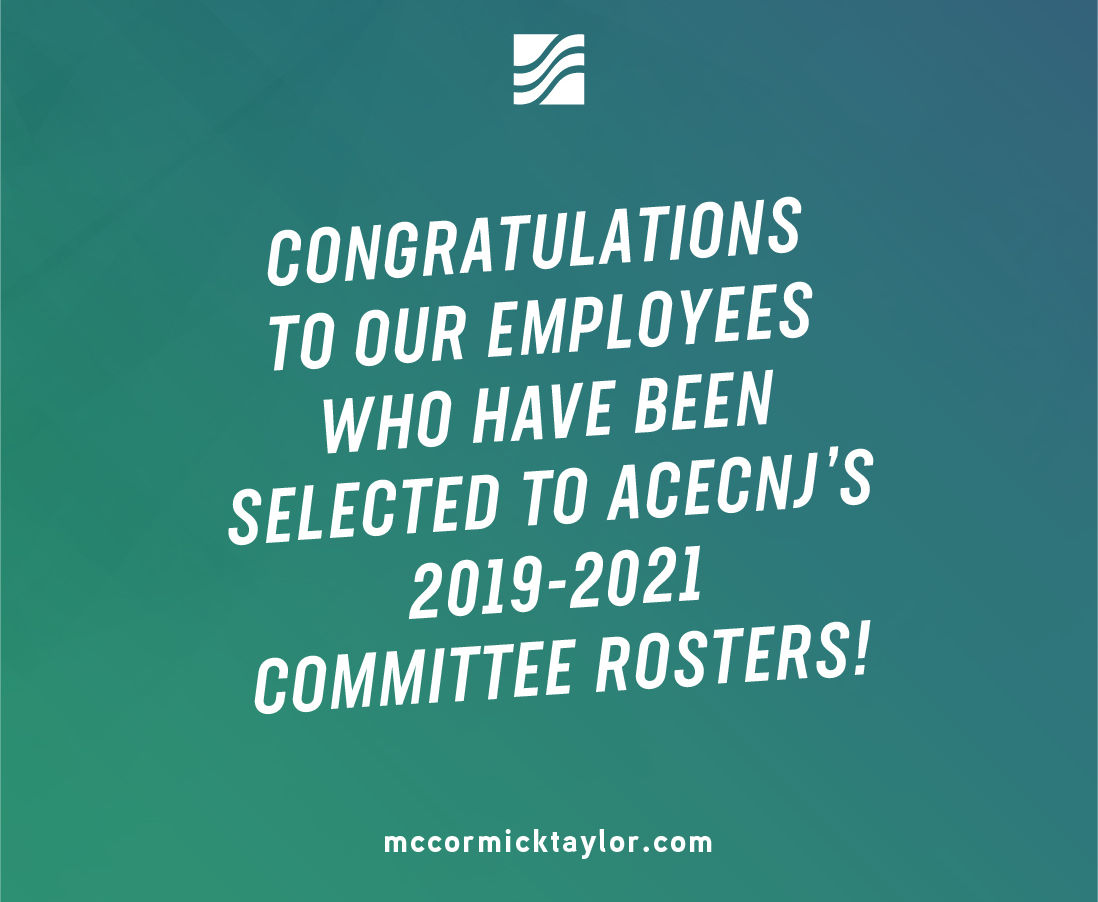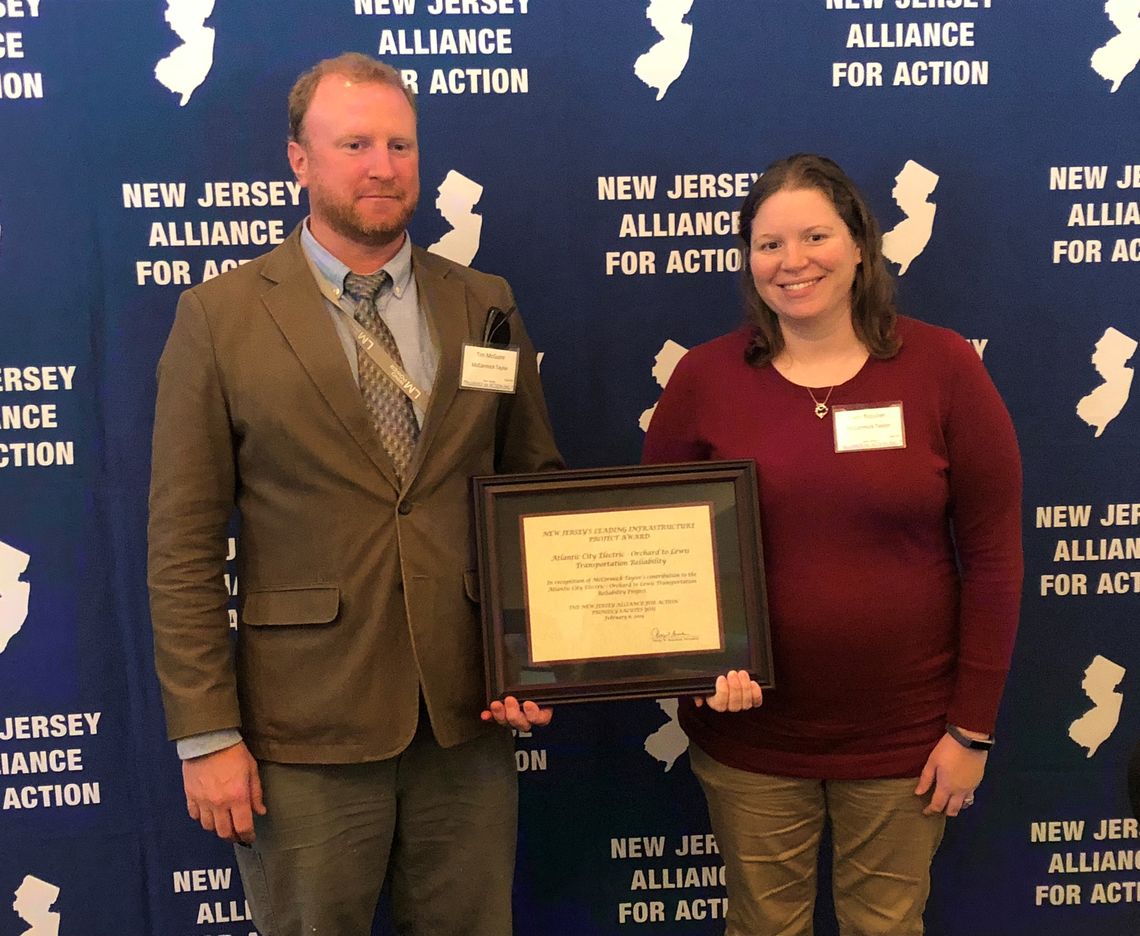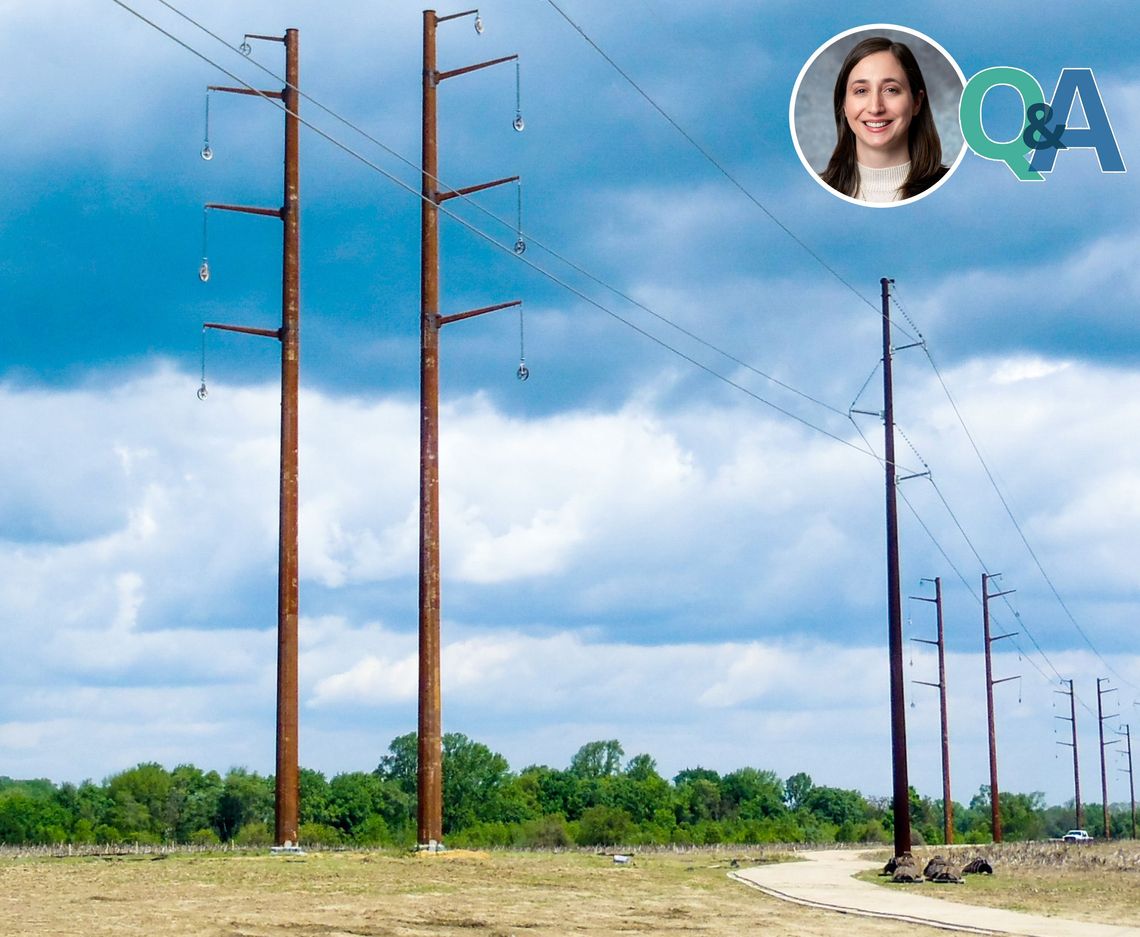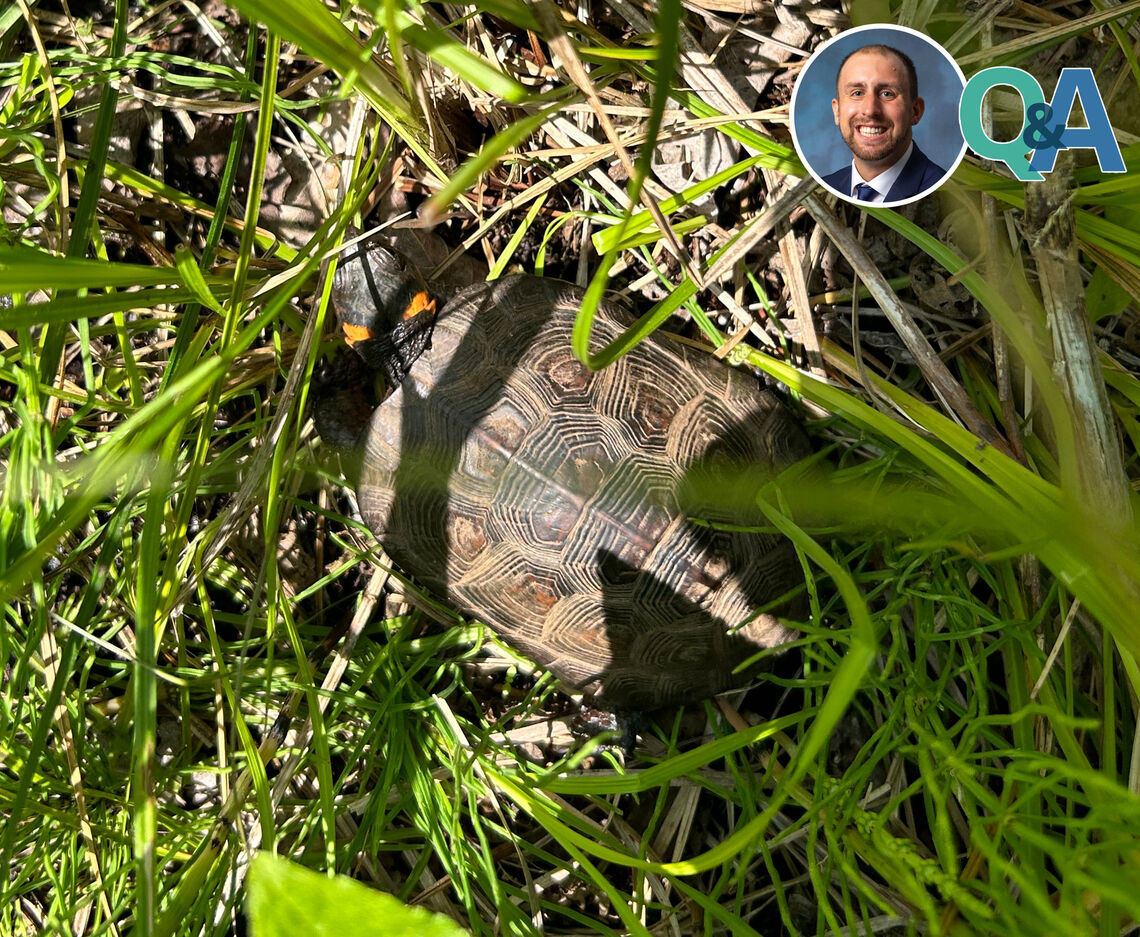
Q&A: THE SIGNIFICANCE OF A QUALIFIED BOG TURTLE SURVEYOR
While the bog turtle is small, reaching only about 4” long at its full maturity, it’s relevance and potential impact to infrastructure projects shouldn’t be minimized. As a federally listed endangered species, the presence of bog turtles in a project area may require special surveys, monitoring, and assessment. McCormick Taylor’s Environmental Scientists understand the requirements needed to deliver expert projects in a timely and efficient manner, have the certification necessary to perform the work, and the relationships with state and federal agencies, which facilitate the project review and study process.
We sat down with Bo Petrillo, MNR, PWS, CE, a Qualified Bog Turtle Surveyor in New Jersey, to learn more about the importance of protecting bog turtles, how to become a qualified surveyor, and hear about his experiences.
ABOUT BOG TURTLES
Can you tell us a little bit about bog turtles, the role they play in the ecosystem, and why they are protected? Bog turtles are a federally threatened and state endangered species in NJ. They are small turtles (>4”) that traditionally inhabit herbaceous dominated wetlands with soft mucky soils and perennial hydrology supported by groundwater. There are two distinct populations of the species the northern population (that I work with) in NY, MA, CT, NJ, PA, DE & MD and the southern population in NC, SC, GA, and TN. There is a large gap of approximately 250 miles between the northern and southern populations.
Bog turtles serve as umbrella species within an ecosystem as their protection helps multiple other species that utilize a similar habitat type. Therefore, bog turtle protection not only benefits the individual species but the ecosystem as a whole!
The reason for bog turtle protection is due to habitat loss and fragmentation resulting in declining populations of the species. Multiple factors result in habitat loss such as, natural succession of wetlands (becoming forested), nutrient overloading from agriculture, and development of surrounding land. Conservation efforts include population studies to determine the size of each population, purchasing land to connect habitat (check out CHANJ), and utilizing large grazers (cattle, water buffalo, etc.) in their habitat to keep out woody vegetation (through herbivory) and creating microhabitats for turtles to utilize.
What interesting characteristics have you observed about bog turtles?
Bog turtles are beautiful animals that have an orange coloration on both sides of their head. Some interesting characteristics have been turtles with missing limbs and even one without an eye! It always amazes me how resilient these turtles are that even with limbs or eyes missing they are still able to live normal, healthy lives!
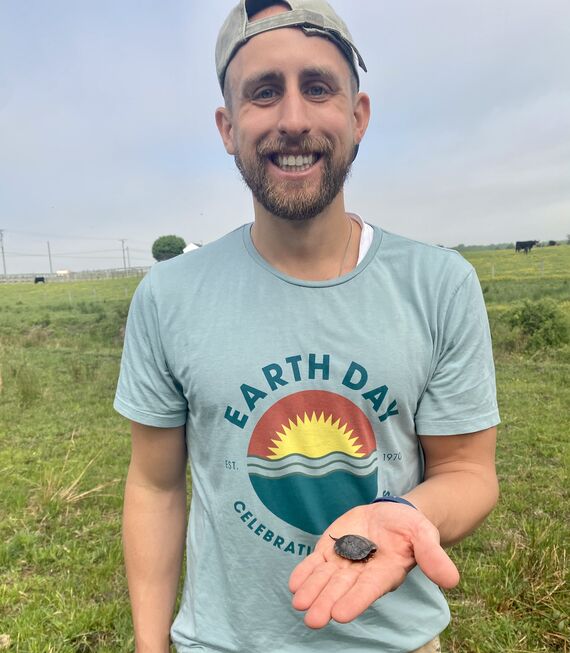
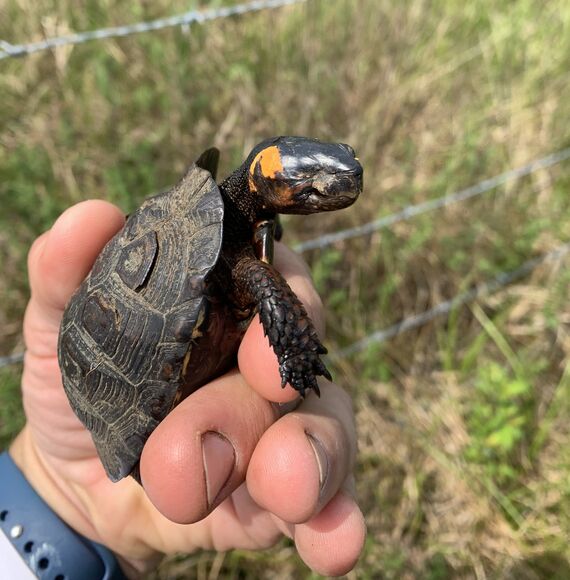
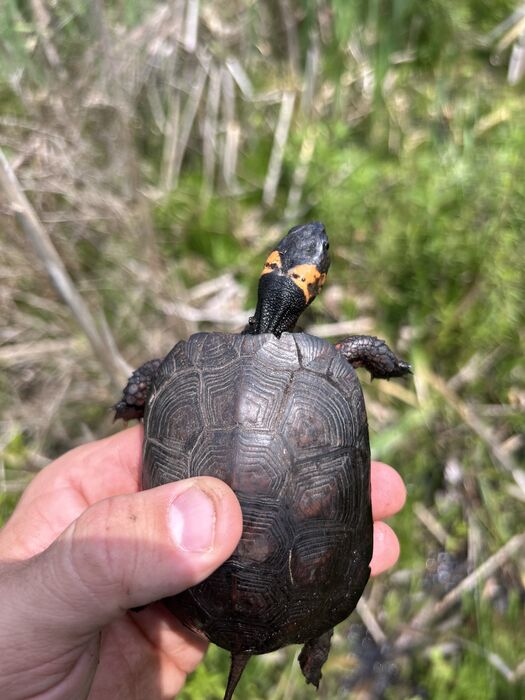
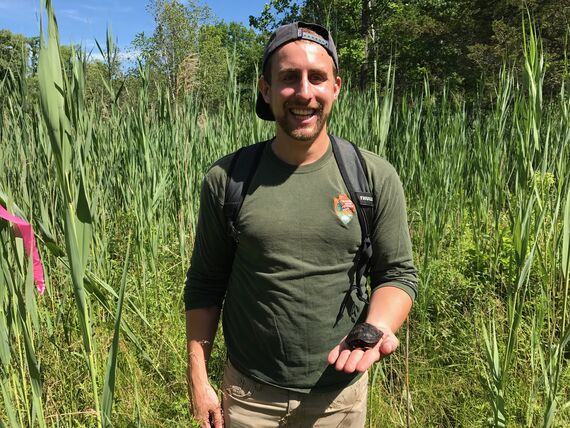
BECOMING A QUALIFIED BOG TURTLE SURVEYOR
What led you to pursue a bog turtle surveyor certification and did your educational background contribute to your interest? I like turtles!! Haha all jokes aside, I’ve always been into reptiles and amphibians. As a kid I would hike with my mom and constantly search for turtles, snakes, salamanders, and frogs. In undergrad, I focused my efforts on salamanders and conducted a multiyear study on the impacts or urbanization on stream salamanders in Philadelphia. After I obtained my undergraduate degree in Biology from Arcadia University, I joined the workforce and became a wetland scientist focusing on wetland delineations, restoration, and conservation. Thats when I was introduced to bog turtles, and they brought all of my interests together! Since then, I went back to school and obtained my Master of Natural Resources Degree from the University of Idaho. My Master’s Degree is in Restoration Ecology & Habitat Management where the majority of my coursework allowed me to study and focus on bog turtle habitat and bog turtle conservation!
What are the steps necessary to become a qualified bog turtle surveyor? I always talk about becoming qualified as an apprenticeship. I was very lucky to have a supervisor that was qualified at my old company. He introduced me to the species and brought me along on surveys. Surveys for threatened and endangered species are not what they are on television! It included multiple days leaving my house at 3 am driving 4.5 hours to a site, surveying (sometimes not finding anything!), and driving home. Without the mentorship to get into the bog turtle community and make the connections needed, this would have been a lot tougher process for me!
Once you start obtaining experience, there are set requirements to become qualified based on the USFWS guidance that you need to work towards. These include 10 Phase 1 Habitat Assessments (checking a wetland for suitable habitat), 10 Phase 2 Surveys (looking in that identified wetland for turtles), and 20 turtle captures in a 5-year period. On top of the federal qualifications, states also implement their own requirements. In NJ, you need to show understanding of both North Jersey and South Jersey habitats.
SERVICES & EXPERIENCE
What is required to perform a bog turtle survey? A stick! A Phase 2 Survey (which the qualified status allows me to do) consists of visually searching the habitat for turtles. Most people grab a probing stick and poke around the wetlands in order to “feel” turtles under the muck. It also consists of walking the wetland and looking for turtles on the move or cryptically basking and sometimes it consists of crawling on your hands and knees and sticking your hands in holes and microhabitats within the vegetation to feel for turtles. If any turtles are found on the survey, you need to record data on them and report the information to the proper jurisdictional agency. The amount of people and size of the wetland determines the amount of time spent in the habitat as you want to minimize impacts to the greatest extent possible.
What is the most interesting experience you had while working with bog turtles?
Probably the volunteer surveys. Picture a bunch of adults all trying to catch a turtle to get the numbers needed to be qualified in the same area for a set amount of time. When the time starts it becomes a competitive search contest. However, the best experience is the way it feels when you see a turtle in the wetland (at least for me). It brings me back to Christmas morning as a child. I get this sense of happiness and disbelief. It truly is an amazing experience!
Do you work to protect other endangered species/wildlife and do you find it to be rewarding? Yes!! So turtles have been my big focus so obviously bog turtles, and I’m also part of eastern box turtle conservation efforts in NJ. In addition to turtles, I love vernal pool species consisting of salamanders like eastern tiger salamander and frogs like pine barrens tree frog!
Helping conservation efforts of species by identifying habitat and populations early in plan development is a rewarding experience as I help protect the species while helping the client accomplish their goals. It’s a win/win!
